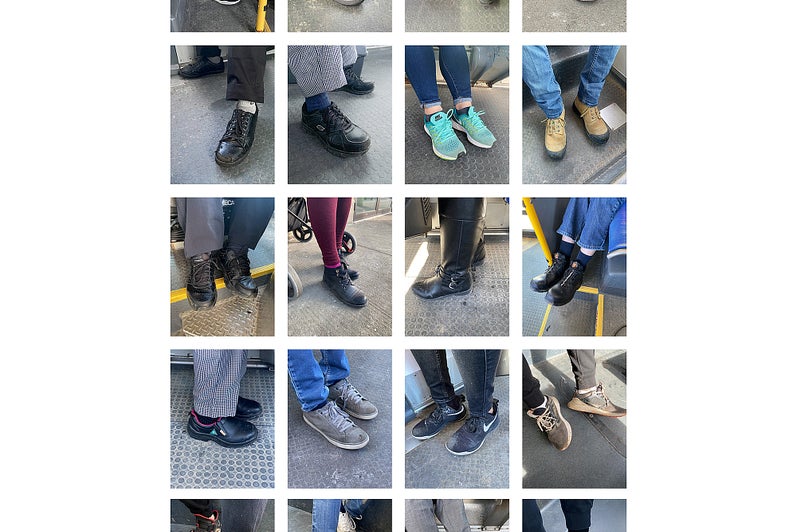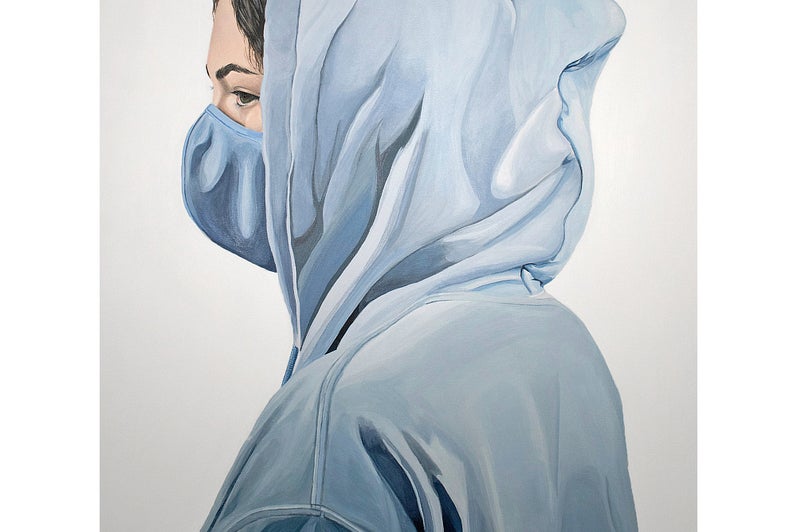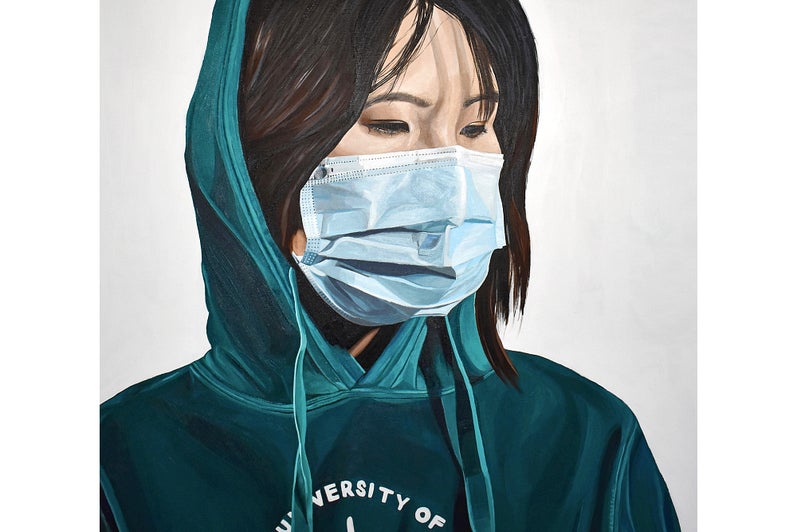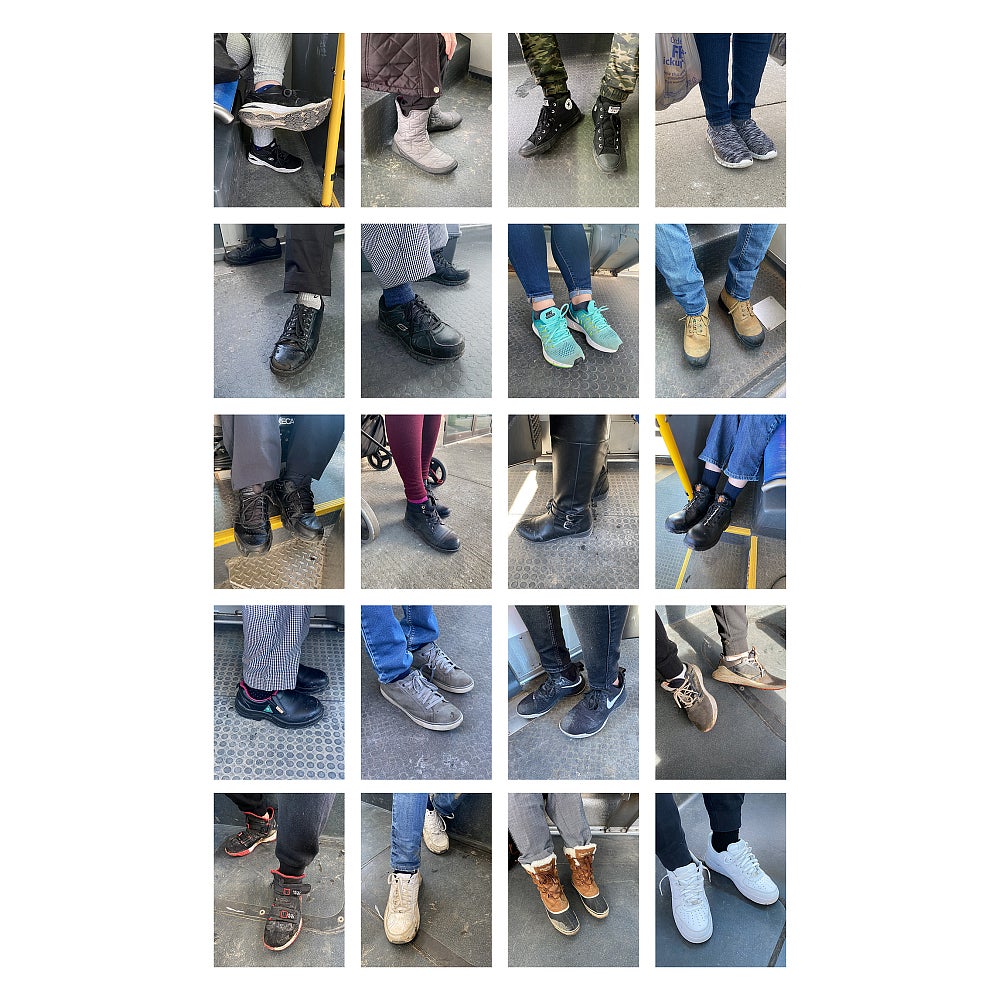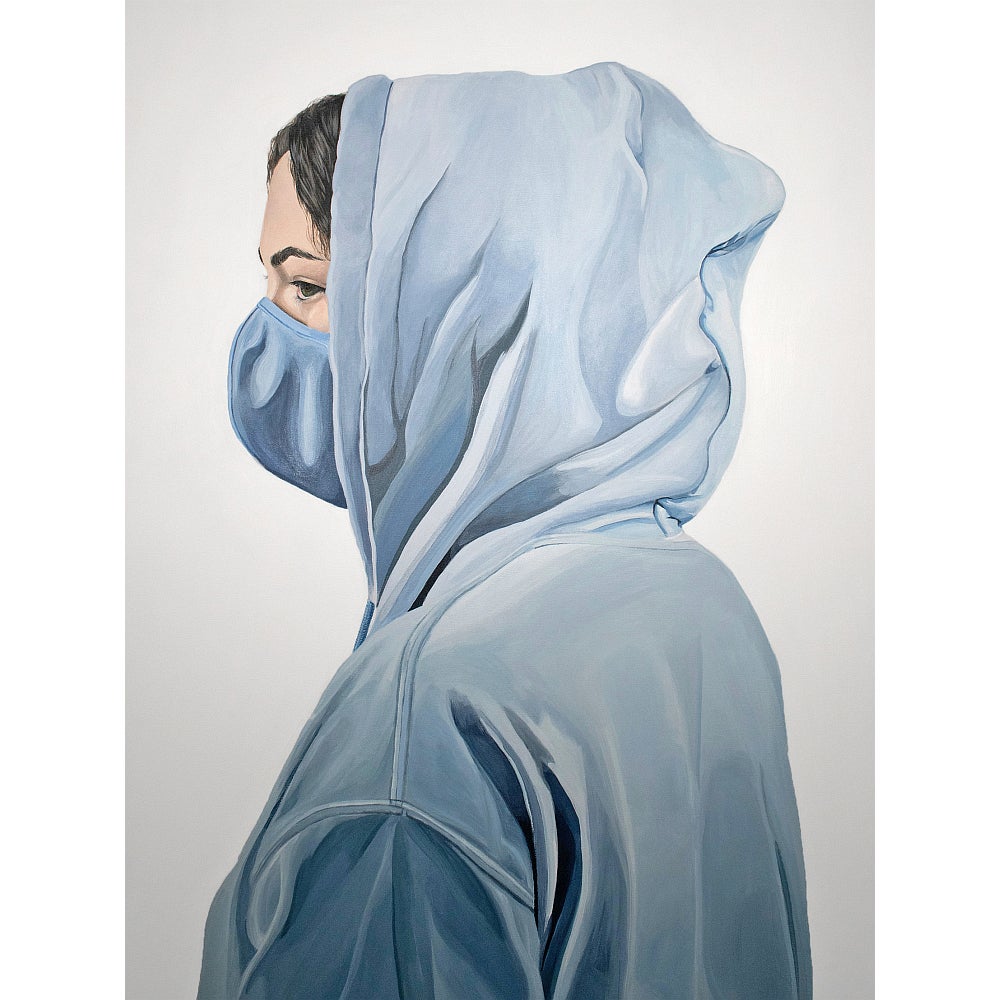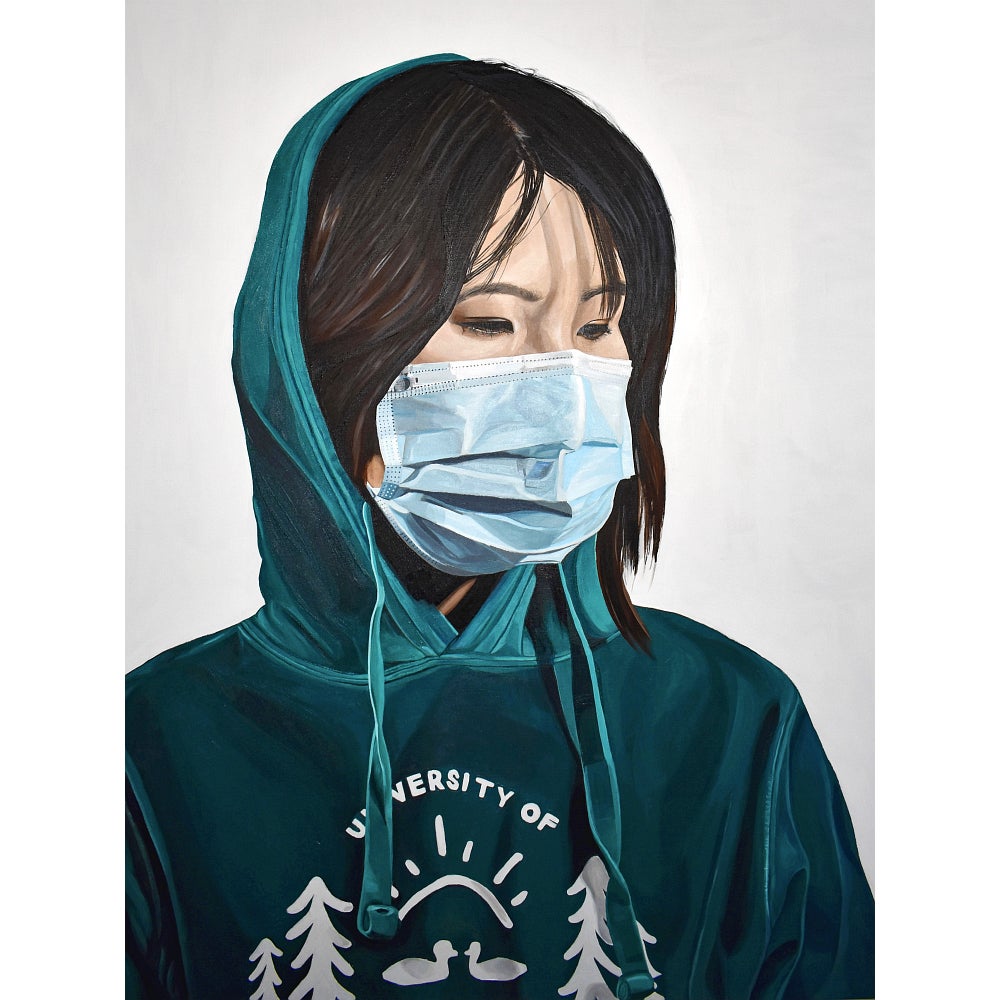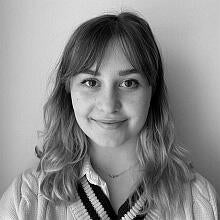
Email: smclermo@uwaterloo.ca
Instagram: @sydneyc.art
Sydney Clermont is a fourth year undergraduate student at the University of Waterloo who is majoring in Fine Arts Studio Practice and minoring in Visual Culture in a Global Context. Sydney specializes in acrylic painting and photography, and has explored themes surrounding identity construction, reproductive rights, and mental health. Although painting is her primary focus, Sydney has worked on sculpture and audio installations with engineers, vinyl heat-transfers on t-shirts, and text printed on crystal clear film. In 2018, Sydney was the recipient of the University of Waterloo Anatomical Illustration Award for her achievements in the Figure and Anatomy course. For her thesis, Sydney is currently working on a two part series; photographs of strangers’ shoes, and paintings of her peers in masks. Her work challenges both the conscious and unconscious biases that make assumptions about others from the ways he/she/they appear.
Artist Statement
Route 202 is a series of photographs taken of strangers’ shoes during my commute to work on the bus every day. This series challenges conscious and unconscious biases that make assumptions about others from the ways he/she/they appear. Merely looking at an individual’s shoes causes one to speculate about their social status, lifestyle, gender, personality, age and race. My goal is to illuminate these assumptions and recognize the negative impacts stereotypes have when they influence our perceptions of an individual’s identity and experience. I limited my inherent biases by photographing every person on the bus at a given time instead of selecting specific individuals. Consent was obtained from every person I photographed. The only instances in which I could not photograph a subject were when the individual was sitting in an inaccessible spot and I could not follow social distancing guidelines, if they were wearing earbuds and could not hear me, or if they did not consent.
Masked is a series of acrylic paintings based on photographs of students, specifically my friends, in hoodies and masks. This is an interesting contrast between the assumptions one makes about a stranger in comparison to someone they know. Due to the global pandemic, everyone is wearing masks and social distancing, causing a disconnect even between the closest of friends. Introducing the attire of hoodies and masks is not only reflective of the physical impact of COVID-19, but also symbolic of the emotional effects of COVID-19. Being covered up and withdrawn, people are hidden from others and what you may assume someone is feeling or experiencing, now you can never be certain.
Interview
Who are your greatest influences? What effect do they have on your thesis work?
My primary influences for my thesis are the works of Brooklyn-based photographer Hannah La Follette Ryan, and Winnipeg-based painter Karel Funk. After coming up with my concept to create a photography series of shoes, worn by people who ride the same bus route to work as I do, I stumbled across this Instagram account called “subwayhands”. As the name suggests, La Follette Ryan takes photographs of peoples’ hands on the subway. The photographs seem posed and organic all at the same time and have this sense of vulnerability to them despite the subjects’ faces not being included. Similar to La Follette Ryan’s hands, I made an effort to keep a lot of the natural positioning of the individuals’ shoes I photograph so that way each person has agency in how they want to express themselves. The second portion of my thesis is inspired by the work of acrylic painter, Karel Funk who for the most part, paints portraits of men wearing coats against a white background. His subjects are either fully or partially turned away, so their gaze is never directed at the viewer (Reilly, 2016). Funk’s work connects to the urban atmosphere of living in New York City and puts the viewer in the position of a voyeur; looking without permission. I was inspired by the formal aesthetics of his work; however, conceptually my portraits are instead reflective of the effects of the global pandemic on university students. Since living in such unprecedented times due to COVID-19, I want to explore this notion that due to having to wear masks and social distance there is now this disconnect even with those closest to you. The hoodies and the masks reflect this state of isolation and being withdrawn which is further emphasized because the subject is looking away.
Reilly, Tina. “The Voyeuristic Work of Karel Funk.” National Gallery of Canada, 1 Sept. 2016, www.gallery.ca/magazine/your-collection/the-voyeuristic-work-of-karel-funk. Accessed 23 Mar. 2021.
What does your work aim to say?
My work this year aims to challenge both the conscious and unconscious biases that make assumptions about others from the ways he/she/they appear. My goal is to illuminate these assumptions, to recognize the negative impacts that stereotypes have when they inform our perceptions of an individual’s identity and experience. The comparison between the portraits of people in masks and the photographs of shoes is interesting because it reveals this concept that as much as you think you know what someone is going through, you can never be sure. Although the subject matter is different, the viewer must interpret the work with the little information they have about an individual, in a way that makes sense to them. One important distinction between the two concepts is that in the portraits, the gaze becomes part of the work, as the viewer is placed in the position of power since the subject is looking away. I wonder if this will cause the viewer to alter the way they make assumptions based on this given role. Furthermore, since the portraits are staged, the subject will have more preparation in choosing what to wear and the expression they carry, whereas with strangers it is more of an organic process because it’s unplanned.
What is your usual artmaking process like? What are your preferred mediums?
I take all of my own reference photos for my paintings using my Nikon D3500 DSLR camera, and for my portraits, I used a softbox light kit for high key lighting. Then, I use photoshop to edit the RAW files so that the levels and colour balance are complimenting. I use Golden acrylic paints and mediums on primed canvas which is my preferred medium for creating my realistic paintings. For my series of photographs on the bus, I made a conscious choice to use my iPhone instead of my DSLR because since it is reliant on the community for participation (if they consent) I wanted to ensure I was approachable. To limit my own inherent biases, I photographed every person on the bus at a given time and the only case where I wouldn’t approach someone would be if they were in an inaccessible spot on the bus or had their headphones in. Due to the pandemic I needed to be extra conscious of passengers’ boundaries and positioning myself that would meet social distancing guidelines.
